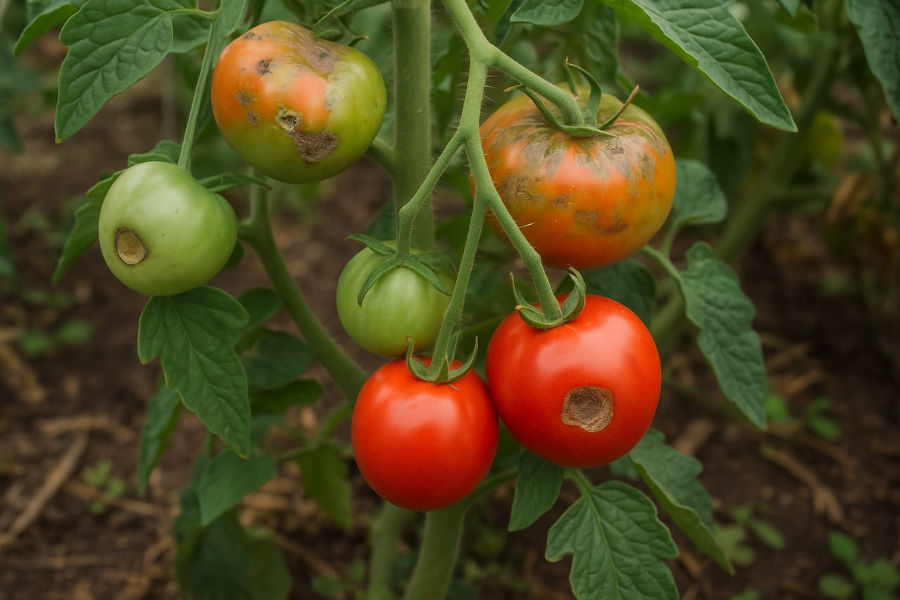Physiological Disorders in Tomato – Causes and Management
Tomato is a widely grown vegetable crop, but its yield and quality are often affected by physiological disorders. These problems are not caused by pests or diseases, but by environmental stresses, nutrient imbalances, and improper cultural practices. Early identification and management are crucial to avoid heavy losses.
1. Blossom End Rot (BER)
-
Symptoms: Dark, sunken spots appear at the blossom end of fruits.
-
Cause: Calcium deficiency due to irregular watering or excessive nitrogen.
-
Management: Maintain uniform soil moisture, apply calcium sources like calcium nitrate or foliar sprays of calcium chloride.
2. Fruit Cracking
-
Symptoms: Radial or concentric cracks develop on ripening fruits.
-
Cause: Sudden changes in moisture levels, high temperatures, and genetic factors.
-
Management: Maintain consistent irrigation, use crack-resistant varieties, and mulch the soil.
3. Sunscald
-
Symptoms: Whitish or yellowish patches on fruit surfaces exposed to direct sunlight.
-
Cause: Lack of foliage cover and high temperature.
-
Management: Provide proper plant canopy, avoid excessive pruning, and maintain balanced nutrition.
4. Puffiness
-
Symptoms: Fruits appear light, flat, and poorly filled inside.
-
Cause: Poor pollination, high temperature, and nutrient imbalance.
-
Management: Ensure balanced fertilization, avoid excessive nitrogen, and maintain proper irrigation.
5. Catfacing
-
Symptoms: Deformed and deeply scarred fruits.
-
Cause: Low temperature during flowering and hormonal imbalance.
-
Management: Plant at proper season, ensure uniform temperature, and use hormone sprays if needed.
